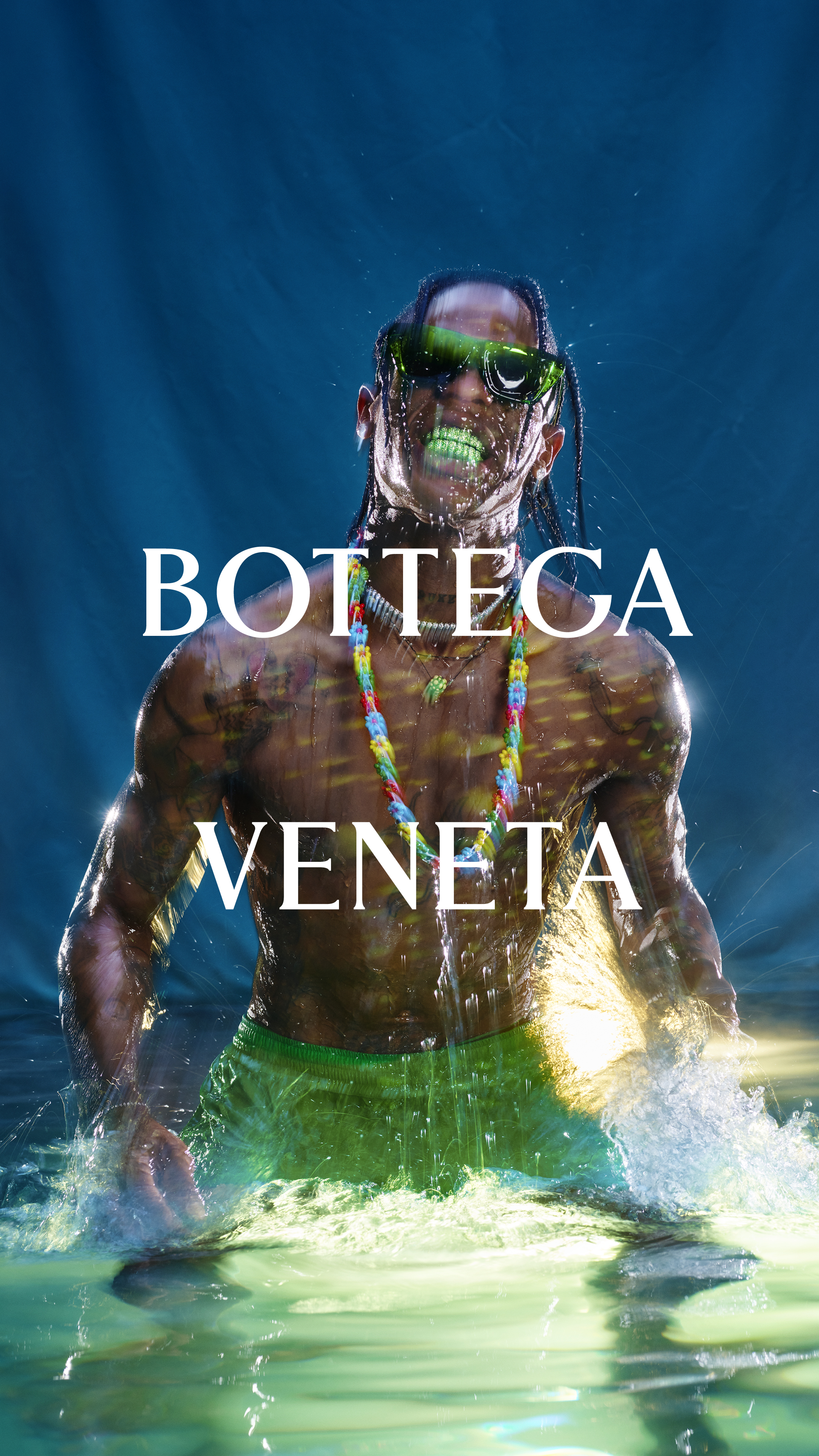
Superfuture and the Fashion World of the Secret Internet
[ad_1]
In 2005, Chris Zaldua was a college student at Wilfrid Laurier University in Waterloo, Ontario, when he discovered Superfuture. He had been searching for information on selvedge denim, the kind of jeans made from vintage looms that mostly existed in Japan. In North America, where the process of hunting for vintage selvedge denim was like crate digging at record stores, a subculture formed comprising peer-vetted aficionados who passed down shared knowledge (and with it taste) that accumulated and distributed across a loose, oral network that was only beginning to map itself online. Wearers took to cuffing their jeans at the ankle, revealing the inner selvedge weave like a cryptic insignia only recognizable to other initiates.
The first section Zaldua stumbled upon was dedicated to shopping and fashion, but nested within was a denim thread that was curiously teeming with more activity than anywhere else on the site. He described to me, “I had the feeling of excitement you get when you discover an entire world that you know nothing about, and you need to dive in.”
Preceding Facebook, Reddit, Instagram, and WordPress, Superfuture functioned as an information node when fashion wasn’t so easily discoverable online. The site was founded in 1999 by Wayne Berkowitz as a site for travel guides pitched as an edgier alternative to Lonely Planet. In 2003, the site launched a message board called “supertalk” to internationally crowd-source travel recommendations on, for instance, where to shop in Barcelona, but quickly ballooned into the teeming cult fashion forum it is best known for today. There were a handful of other forums like it — NikeTalk, Styleform, theFashionSpot — where fashion communities formed before Web 2.0’s introduction in 2004. Popular in the mid ’00s, these communities exhibited the beginnings of what we now consider hallmark features of online life: trolls, cults of personality, the redistribution of encyclopedic knowledge, and the collapse of traditional taste-making institutions. They certainly weren’t the origin of any of these phenomena, but they stood at the concentric center of the very currents of commerce, celebrity, and aesthetics that would come to define our present reality.
Zaldua began stealing time from his breaks between classes and late nights to spend on the forums. The digital space was a comfort zone, one he could navigate fluently, like the original metaphor of one “surfing” the web. Born with a stutter, he spent much of his childhood years in chatrooms, where he didn’t have to worry about stuttering. Since age 10, he lurked video game forums on his family computer; by his teens, he regularly chatted with friends he met on IRC chatrooms. Superfuture was the first message board where he became a so-called “power user.” Under the username minya, named after Godzilla’s son, he began posting anonymously on Superfuture’s denim thread, which spanned hundreds of pages. His posts were easy to like: snarky but positive, breezy. Denim heads from across Japan, Europe, and the States dropped long, intensive “resource dump posts” with an amount of information Zaldua described as “unreal.” There, he found information on denim fabrics, construction, dying techniques, fading techniques, processes for care and wash. These were coming from people who had been buying jeans in Tokyo for over thirty years socializing with hyper-connected college students whose gateway into raw denim was Nudie Jeans.
The forums brought out an insouciant, jockeying demeanor amongst its users that, because it was anonymous, was at once brazen, nerdy, and blithe. Zaldua could get to know users through the forums or direct messages, even if he didn’t know their government names or their professions. A communal lingo solidified: outfits were “fits,” clothes were “jawns.” Once the “What are you wearing today?” thread (WAYWT) appeared, people began sharing photos of what they wore every day for the hive mind to respond, unleashing a competitive spirit. Some users posted “fit pics” with their faces obscured — a vie for the unspoken code of anonymity that pervaded the forums. Personalities achieved cult status. One user named Sidney Lo took to photographing himself on WAYWT, wearing a single pair of jeans every day for a year, unwashed, and then compiled the photos in a time-lapse video.

There were female users on the site, though Superfuture’s focus skewed towards men’s fashion, at a pivotal juncture when more than a general interest in men’s fashion was broadly considered somewhat embarrassing. Consider the word “metrosexual,” which appeared during these years, describing a straight man who fussed enough about his clothes as to be considered effete. It had homophobic implications, to be sure — as if sexuality had anything to do with it — during a period of cultural transition when menswear interest was moving into the mainstream. (Compare the fey “metrosexual” to today’s “fuckboy,” a hyper-sexualized and unattainable cavalier posting looks in fake Vetements raincoats on Instagram.) The menswear taboo created a vacuum that drew people to connect on the forums in semi-private space. These users valued the freedom of a semi-anonymous zone where people across the world could trade resources, hot takes, or fit pics. Crucially, the forums were run on ColdFusion BB in the early years, a Web 1.0 software whose search function never worked properly. Topics could show up in Google results, but not individual posts. Thus, nobody was held accountable to a vast public archive of post history.
Elsewhere on the site, equally intricate threads were devoted to military surplus, techwear, and a dark fashion aesthetic known then as “goth ninja,” years before they hit the mainstream. The Cayce Pollard look — taking after the character William Gibson’s 2003 novel Pattern Recognition — was popular on the site’s early years as a new de facto uniform for cyberpunks: all-black basics and an MA1-Bomber. In contrast to the model of the dandy, who wore outlandish styles to distinguish himself from the crowd, here was a sensibility rooted in streetwear codes that employed style as emergent from a broader collective that sourced its meaning.
Superfuture was the first place that convinced Kiya Babzani that there could be a big enough community in the US for Japanese denim. In 2006, he opened Self Edge in San Francisco, which would become one of the only boutiques in the country to sell Japanese brands such as Samurai or Flat Head. These are the kinds of jeans you wear until they ripped, and Self Edge offered a service where you could bring the pair back to the store to be repaired for free. Vintage jeans were hung on the walls like collectibles, with a small placard listing details like “Lived in Length” and “Number of Washes.” At noon on opening day, the first person to walk in was someone who heard about it on Superfuture. Starry-eyed, the customer perused the selection of Japanese denim and said, “I’ve never seen this stuff in person.” He walked out with a $300 pair of jeans.
Within that first year, Self Edge became a pilgrimage site for Japanese denim, attracting customers who discovered the store from the forums. “Without Superfuture, I’m not sure if we would have any stores today,” he told me. In 2007, Babzani hosted the first ever IRL Superfuture party at the San Francisco store. Half were from the Bay Area, while others had flown out from London, Amsterdam, Paris, and Australia, and spent the weekend together. The store was packed and bled out onto the street. People were dressed in different aesthetics that reflected the threads on the site: Japanese denim, head-to-toe Rick Owens, or in skater brands like Neighborhood and Supreme.

Zaldua attended the party wearing selvedge jeans from Dior: a grail item on the forums. He described the scene as “a bunch of dorks who talk about clothes on the Internet packed into this tiny store,” but it made up a core group of Superfuture users. By then, people knew him as Superfuture’s first paid moderator, whose task was to keep discussions on topic or diffuse arguments. As his responsibilities increased, he posted less, which created a cloud of mystery around his persona on the site — not always a good thing.
Some saw him as a cop who intervened when the forums got unruly. Around this time, a growing group of shitposters were emerging. They didn’t have the edgelord shock-tactics of somewhere like 4chan, but they could troll other users hard, sometimes arbitrarily. If the shitposters didn’t like your fit pic, one might interrupt the conversation and just say “Gay!” Or if you were talking too much game, somebody would dig up an old photo from your fit pic archives and embarrass you. They called you a “tryhard” or “herb” if you were a poser. Some evaluated looks around “brand synergy,” which meant there should be a cohesive narrative within the different pieces of your outfit. For instance, if you wore military surplus with skater clothes — ostensibly trying on different signifiers that looked cool with no understanding that their subcultures didn’t mix — you were a “herb.”
Naturally, the forums got cliquey. One disgruntled user allegedly “decamped” with 10 other members, spinning off his own rival forum StyleZeitgeist in 2006, with more of a focus on “avant” fashion. Superfuture users ragged on it for being pretentious; one user described it to me as “theater kid.”
Some situations Zaldua found difficult to moderate. When a new second-hand retail feature introduced a share of unhappy purchases or scams, further corroding trust on the site, he had little to say other than “Sorry, man.” Users took to their own means. Once, after a user got scammed by someone else on the site, he doxxed him: getting a photo taken of his house in LA along with a hacked photo of his ID, both of which he posted on the forums to intimidate him, “I know where you live”-style. Trolls could get so aggressive that they had to be banned from the site, after which some would beg to be let back on. Berkowitz, the site founder, told me that he got phone call threats in the middle of the night from banned users. At one point, someone even made a bomb threat on the Superfuture offices in Tokyo.

In 2010, Zaldua stepped down as a moderator, partly because he was burnt out — “too much work,” he said — but also because peak activity seemed to be waning. Several users I spoke to attributed this to a series of clunky site redesigns that had unresolved UX problems. When I spoke to Berkowitz, I got the impression that maintaining the site was a plague of endless crashes and necessary site updates that ultimately everyone hated (Berkowitz stressed that the original HTML site was never built to maintain this traffic, hosting 83,000 users at one point). Continually funding the site and its staff of developers and moderators posed new challenges. The advertising landscape was rapidly changing with Facebook and Google ad models stealing away customers who were no longer interested in buying banner ads on message-boards. While the earlier generations of Superfuture moved on as they got older and more professionalized, there was little that drew new members in the more Big Social began to monopolize the Internet. Years after Zaldua eventually stopped posting, he would go back periodically and check up on the site. “It was a dead zone,” he said.
Most of the early users I spoke to kept in touch and made lasting, offline relationships. During the peak years, it was possible to travel all across Europe and the States and find one user in each major city to couch-surf for a few days. Many who posted on Superfuture as college students would go on to hold high positions at adidas, Nike, and Levi’s. Others would move onto the art world, start record labels. It was not uncommon for people who knew each other from the forums to run into each other at Paris Fashion Week. Samuel de Goede, the design director at the Dutch brand Byborre, recalled getting on a video call with new clients, who immediately recognized him from his fit pics he’d posted on WAYWT. When I asked him about what Superfuture’s legacy is today, he said, “The legacy is the network.”

In retrospect, the story of Superfuture emerges as one about how influence is made from the ground up, emerging from the early, anonymous spaces that once proliferated before Web 2.0, and going on to influence wider tastes and mores above the subcultural underground. At a critical historic juncture in the mid ’00s, Superfuture’s peak activity happened concurrently with the last major turning point in luxury fashion: the streetwear revolution, the birth of fashion blogging, and the emergence of ‘the new luxury.’ Several styles — like goth ninja, techwear, nu rave — can certainly be traced back to Superfuture, though perhaps more prophetically, it anticipated much of the new weirdness of how fashion is experienced online today.
In the past, access to detailed knowledge about fashion — construction, craft, design — was regulated by luxury institutions, reserved for specialists working for an elite class whose participation fee was a high-end price point. On Superfuture, expert knowledge was pooled and shared freely across countries and generations. As the forums began gaining a steady influx of new recruits, old heads would police new users for asking stupid questions that had already been answered in the threads. There was a “shut up and do your research” mentality. Here, participation in fashion wasn’t necessarily easier than the old luxury model; it still required work, but it wasn’t gatekept by a price point.
Secondly, the WAYWT thread exhibited some of the early signs of influencer culture. During the mid ’00s, before cell phones had cameras, the DSLR cameras were just becoming affordable for a hobbyist market, enabling a new prestige class of photographers to post amateur fit pics with depth of field. Suddenly, in light of the daily influx of fit pics, The immediacy of online selfies promised a more credible engagement with the present, casting fussy magazines editorials as manufactured, slow, and out of touch. And because other users could comment and react, essentially workshopping a community aesthetic, they felt they were a part of something, a tribe, instead of a hanger-on of celebrity culture.
In the same way that users took on the de-facto roles of model and editor on Superfuture, they also converted into second-hand retailers. Far easier than renting a stall at a street market, Superfuture users could now resell clothes on Superfuture’s market platform with pictures posted online to a global market. This was particularly crucial with selvedge denim, rare in the States. For a time, the only way for Americans to get selvedge denim was learning how to translate and navigate Yahoo Japan. Once Superfuture’s market platform emerged, they could get jeans shipped from Japanese users just by sending a few DMs. Notably, all of this took place before the existence of Grailed, Depop, and The RealReal, which would soon capitalize on global online fashion resale and irrevocably alter the physical retail landscape.

The trend in these cases is that of vernacular behaviors emerging on their own, before Big Tech began rapidly devouring them for profit. The decline of Superfuture — which Berkowitz insisted to me “never sold out” — can be easily attributed to how larger and more powerful platforms backed by ample VC funding began offering the same services as Superfuture, but better. Grailed, Instagram, Reddit, you name it. Yet to dismiss Superfuture as one of the last dinosaurs of the Internet would be to miss the radical potential of what it might offer to online sociality today.
What’s most urgent about the Superfuture model is how it might offer alternative models for our current demand for semi-anonymous spaces free of the predatory platforms of the mainstream Internet. Now more than ever, people are retreating from Big Tech, back to the shadow zones once exemplified by Superfuture. Users en masse are deciding to deplatform themselves, turning to encryption, going anonymous. New shadow zones are emerging with frantic activity, free from the oversight of a google search or a publicly-indexed Instagram or Twitter feed. These new spaces are sometimes called the “dark social” or the “dark forest,” spaces where people forage for content and shares that aren’t algorithmically matched to users, but enthusiastically offered by others simply because it meant something to them. These spaces exist on Discord servers paywalled through Patreon, private Slack channels, encrypted group chats on Telegram and WhatsApp, or endless streams of DMs. Here, users can escape the endless cryptographic algorithms, search engine crawlers, psychographic profiles, data mining, and targeted advertisements of Big Social. There’s no pressure to perform in accordance with one’s professionalism, no fear that a 15-year-old tweet will get dredged up to get you fired. In a climate of low-stakes experimentation, people feel free to take more risks, test theories, debate ideas. Value and reputation are accumulated simply by what you bring to the community — free from the gamification of impressions, upvotes, or share counts.

It’s possible that we are currently witnessing the biggest mass migration of users since the birth of Web 2.0. As media and circulation shifts, so will methods of advertising that will certainly frustrate current retail models. Old institutions once thought indestructible will crack. With a reinvention of the public will come the articulation of new intellectual thought. One can anticipate the emergence of a new model of influence not predicated on entrepreneurial visibility and metrics, but community investment. If the new styles that emerged on Superfuture had staying power, it’s because they were given the time and breathing room to grow beyond its toddler phase, a stark contrast to Big Social today, where an infinite amount of filter bubbles, category tags, and micro-trends from trad to babycore exist on TikTok and Instagram and have a shelf-life of a few months max before they’re poached by cool-hunters or trolled into oblivion.
If culture feels disposable today, it’s because it’s been removed from communities that source its meaning. Mass culture has always created communities, though people don’t exactly identify with their favorite movies the way they do with the clothes they wear, which is the source of its unique potential: the ability to articulate community identification. In the age of mass state and commercial surveillance, spaces where communities can form around fashion — naively, organically, halfway in the dark — can still chart ways forward from Big Social’s total commodification of the self as content farm. It might be that the most progressive thing to do in fashion today is to chat about it like it’s 1999. See where it goes from there.
Superfuture and the Fashion World of the Secret Internet Source link Superfuture and the Fashion World of the Secret Internet
[ad_2]
Source link






 We use cookies to optimize our website and our service.
We use cookies to optimize our website and our service. 

Responses